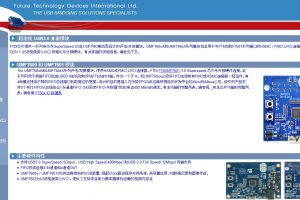
Read our full Electronica 2018 coverage »
The FT4233H is an advanced bridge IC with USB Type-C connectivity and USB power delivery (PD) Rev. 3.0 controller capabilities – supporting applications up to 100W.
Through use of the FT4233H, it will be possible for currents of reaching 3A to be provided to connected hardware (power tools, lights, household appliances, etc.).
All the negotiation and power gauging activities are taken care of directly, via the IC’s integrated 32-bit PD Policy Engine and USB Protocol Engine elements (with no USB specific firmware programming being required).
This means the system microcontroller does not have to get involved in such functions and system performance is thus not impacted upon.
Supporting USB High-Speed data rates (480Mbps), the USB bridge function of this device is compatible with the quad high-speed USB to multi-purpose bridging offered by the company’s previous generation FT4232H device – including UART, I²C, JTAG, Bit-Bang or SPI via its integrated MPSSE Engine, on up to 4 independently controllable channels.
Support of two Type-C ports is encompassed, with a configurable port that can act as either a power sink or source (or in a dual role capacity) supporting Fast Role Swap, and the other port serving solely as a sink.
The FT4233H USB bridge IC relies on a single 3.3V power source for both VCC and VCCIO. It is supplied in a 76-pin QFN package. An operational temperature range spanning from -40°C to +85°C is supported.
At this year’s Electronica, FTDI Chip will be demonstrating how next generation USB power delivery can be achieved using this ground-breaking new device.
At Stand 155 in Hall B5 this technology can be seen in action.
 Electronics Weekly Electronics Design & Components Tech News
Electronics Weekly Electronics Design & Components Tech News




” This is the sensor which records images of animal or plant tissues, and microbes, shown on the computer monitor screen using the computer’s USB port. Once upon a time, a microscope was small which can do simply a limited set of capabilities. Sure these microscopes really are a small bit expensive in case living cells study will be your field, it is advisable to invest in one.
Ah, that wasn’t supposed to be a link, I’ve de-activated it. Thanks for pointing it out, SEPAM.
Something strange happened to the link “via the IC’s integrated 32-bit PD”.